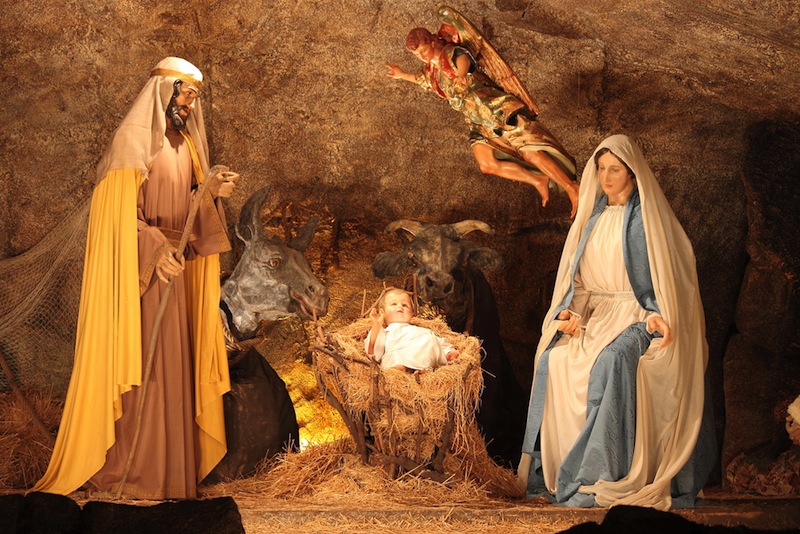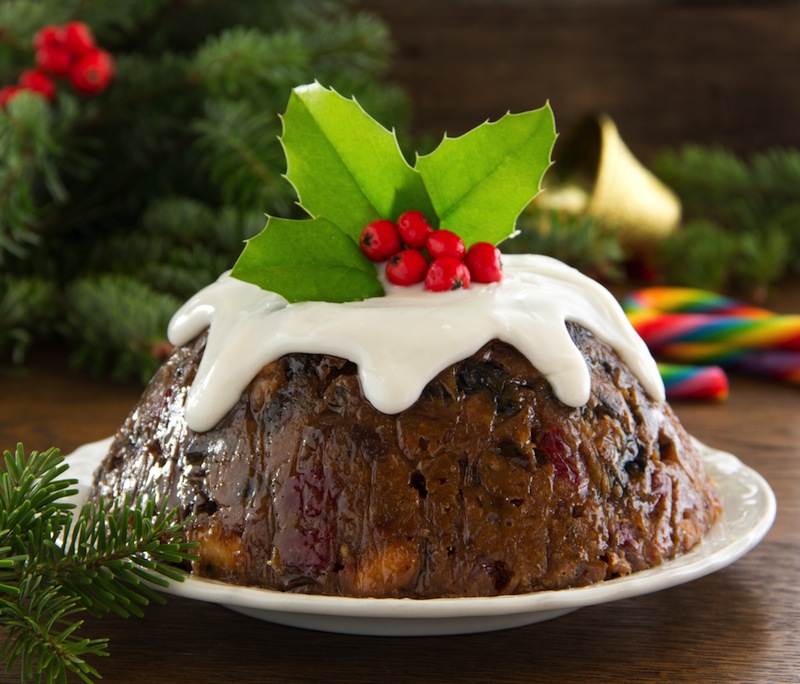10 Christmas Traditions From Around the World

This article was provided by AccuWeather.com.
Although the Christmas holiday season is typically known for its wintry weather, carolers and tasty treats, not all Christmas traditions around the world are one in the same.
Read below for a list of 10 holiday customs from around the globe.
1. Christmas Markets
Popular across central Europe, the Christmas markets are famous for their elaborate decorations, lights and shopping stalls Throughout some of Europe's biggest cities, vendors, craftsmen and women, bakers and more gather to sell and showoff their talents.
Open usually from late November until the day before Christmas, Dec. 24, these markets typically include handmade crafts and toys, holiday ornaments, famous foods, wines and pastries that are specific to that region. Aside from area residents these markets are sought-after by travelers. In most of the markets, shows, performances, carolers and other musicians play at various times over the course of the market season.
Vienna's biggest Christmas market, the Christkindlmarkt, is seen in front of the city hall in this Nov. 26, 2005 file photo. (AP Photo/Lilli Strauss)
Get the world’s most fascinating discoveries delivered straight to your inbox.
Some of the biggest and most well-known Christmas markets are located in Vienna, Austria, Munich, Germany, Prague, Czech Republic and Stockholm, Sweden.
2. Boxing Day
After an Australian bbq'ing, beach-going Christmas, the day after Christmas in the country is known as Boxing Day, it's an Australian public holiday. Similar to Black Friday in the United States, on this day, stores put on huge sales and people pour in to get the best deals.
RELATED: You've Never Seen a Snowflake in This Much Detail AccuWeather Winter Weather Center Who Has the Best Chance for a White Christmas?
Typically this day is also the release of some of the year's biggest movie premieres. Last year both The Hobbit and Les Miserables were released on this day.
3. St. Lucia Day
This year, Dec. 13, 2013, will mark St. Lucia Day in Sweden and Denmark. This Swedish tradition is linked back to a folkloric figure named Lucia, who brought light to the country during the dark winter days. The annual candlelit procession has origins back into the late 1700s but the tradition became more popular in the 1900s, according to the Swedish Institute's website.
On Saint Lucia's Day, children from The Royal Danish Academy of Music sing in the Tivoli Gardens in Copenhagen, on Thursday, Dec. 13, 2012. (AP Photo/POLFOTO, Thomas Borberg)
For the yearly march, a competition takes place to name the national Lucia. Each town names their own Lucia as well. On Lucia Day the chosen girls and boys dress in long white robes with red sashes and carry some variety of a candle. The girls typically wear a wreath of lit candles on their heads.
The day consists of singing the holiday's songs, eating ginger snap cookies and drinking glogg, a Scandinavian traditional Christmas drink.
4. Nativity Scenes
While these have become a staple for the Christmas holiday, perhaps one of the largest nativity scenes is set up in Saint Peter's Square in Rome, Italy. Just outside Saint Peter's Basilica, also accompanied by a large Christmas tree, the life-size scene is not unveiled until Christmas Eve.
A view of the Nativity scene inaugurated by Pope Benedict XVI with a lit candle from his studio window overlooking St. Peter's Square at the Vatican, Sunday Dec. 24, 2006.(AP Photo/Andrew Medichini)
It has become a popular spot for both tourists and Italian citizens, as the Pope also conducts his midnight mass inside the Basilica.
5. Krampusnacht
Also known as the "night of Krampus," this holiday is celebrated on the eve of St. Nicholas' Day, Dec. 5, in Austria and other parts of Europe. Typically portrayed as a quintessential devil, Krampus is the evil counterpart of St. Nicholas, who takes the reins in punishing bad children.
A man dressed as a Krampus, the companion of St. Nicholas and one of Austria's unique Advent traditions, makes his way during a traditional Krampus procession in Lofer, Austrian province of Salzburg, Saturday, Nov. 30, 2013. (AP Photo/Kerstin Joensson)
The night of Krampusnacht usually entails masquerades in which people dress as devils, witches and other notoriously sinister beings. While the night has origins in Europe, its celebration has made its way to even American cities such as Los Angeles, Calif., according to the festival's webpage.
6. The Gavle Goat
A tradition since 1966 in the Swedish town of Galve, this festive display has caused the town havoc for multiple years. The 13 meter high and three ton straw-made statue was built to showcase the traditional Swedish Christmas straw goat, which normally is made in sizes small enough to fit on a mantle.
A giant straw Christmas goat is erected in Gavle, Sweden Sunday Dec. 3 2006, a centuries-old Scandinavian yule symbol that preceded Santa Claus as the bringer of gifts to Swedish homes. (AP photo/Scanpix, Pernilla Wahlman)
The inauguration of the goat takes place every year on Advent Sunday in Castle Square within the city. According to the event's website the Galve Goat stands in the square from inauguration day until a few days after New Year's Eve, unless it gets burned down which has happened on multiple occasions.
7. Christmas Pudding
Once called Plum Pudding, this British tradition, also popular in Australia, has been served throughout history around the Christmas holiday season. According to the Oxford Dictionary the pudding is a "rich boiled pudding made with flour, suet and dried fruit." The pudding itself takes hours to cook and then it is usually served still flaming hot or actually flaming.
However, the making of the pudding is legendary for its wish-making tradition. Customarily, all those who stir the batter are supposed to make a wish. Sometimes, the bakers even drop a coin into the batter and the person to find it on Christmas is considered the lucky one.
8. Letters to Santa
A well-known tradition across the globe, writing letters to Santa Claus has become a standard for the Christmas season. However, the Canada Post has truly made this custom a reality for children around the world.
Santa Claus today has his own postal code and he can be written to in any language, even Braille. What's even better than that? Well, Santa will actually write you back too. According to the Canada Post, letters to the big man do not even require postage and Santa's response is delivered back for free.
Together volunteers from the postal service help respond to all the letters sent to Santa each year. To write a letter to Santa Claus, see the address below but be sure to include your return address too!
To send a letter to Santa:
Santa Claus
North Pole H0H 0H0
Canada
9. The Glass Pickle
While this story's origins are said to be Germanic, the tale goes that the glass pickle is the last ornament hung on the Christmas tree, hidden somewhere among the decorations. On Christmas morning, the first child to discover the pickle gets an extra present.
10. Broom Stealing
Like many other places in the world, Norway celebrates Christmas Eve with a big dinner and the opening of presents, however what differentiates the country is what households do after the commotion. At the conclusion of the night, all the brooms in the house are hidden.
It is a long-lasting belief that on the night of the holiday evil spirits would come out and steal brooms from families and proceed to ride them around in the sky. So, as a result all the broomsticks are hidden due to superstition.
Have questions, comments, or a story to share? Email Kristen Rodman at Kristen.Rodman@accuweather.com, follow her on Google+. Follow us @breakingweather, or on Facebook and Google+.
© AccuWeather.com. All rights reserved. More from AccuWeather.com.


